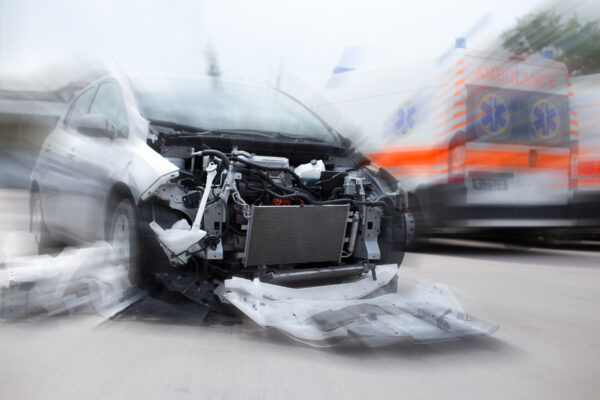Aftermath of an Accident: A Comprehensive Guide to Car Accident Cases
In the aftermath of a car accident, the road ahead can seem daunting. From dealing with insurance companies to pursuing legal action, navigating the legal landscape can be a confusing and overwhelming process. This comprehensive guide will provide you with everything you need to know about car accident cases, empowering you to make informed decisions and protect your rights.
The Immediate Aftermath
In the immediate aftermath of an accident, your priority should be your safety and well-being. If you or anyone else is injured, call 911 immediately. Once you’re safe, gather as much information as possible, including the names and contact information of all involved parties, insurance information, and any witnesses. Take pictures of the accident scene and your injuries, if possible. Don’t admit fault to anyone, even if you believe you may be responsible, as this could impact your insurance claim and legal rights.
Determining Fault
Determining fault in a car accident can be a complex process. Insurance companies and courts will consider a variety of factors, including the actions of the drivers involved, traffic laws, and any evidence available. In some cases, multiple parties may share fault. Understanding the concept of comparative negligence is crucial in these situations, as it determines how much each party is responsible for the damages.
Filing a Claim
If you’ve been injured in a car accident, you have the right to file a claim with your insurance company to recover compensation for your damages. This includes medical expenses, lost wages, and pain and suffering. The claims process can be lengthy, so it’s important to gather all necessary documentation and cooperate with your insurance adjuster. If you’re unable to reach a fair settlement with your insurance company, you may consider filing a lawsuit.
Navigating the Legal Process
Filing a lawsuit can be a daunting prospect, but it may be necessary to protect your rights and obtain full compensation. An experienced car accident attorney can guide you through the legal process, negotiate with insurance companies, and represent you in court. They will work to build a strong case on your behalf, maximizing your chances of a successful outcome.
An Example Accident Case
Imagine you’re driving home from work when a speeding car runs a red light and slams into your vehicle. You suffer serious injuries that require hospitalization and extensive medical treatment. Your insurance company denies your claim, citing your failure to yield the right-of-way. With the help of an attorney, you file a lawsuit against the other driver, arguing that they were negligent in causing the accident. After a lengthy trial, the jury finds the other driver 100% at fault and awards you a substantial settlement.
**Accident Car Case: Navigating the Legal Maze**
When the screech of metal on metal echoes in your ears and the impact jolts your body, the aftermath of a car accident can be a bewildering blur. Amidst the chaos, one crucial step emerges: navigating the legal process to secure the compensation you deserve.
**Understanding the Legal Process**
Filing a personal injury claim after a car accident is not a walk in the park. Here’s a breakdown of the legal labyrinth you’ll encounter:
**1. Reporting the Accident:**
Immediately report the accident to the police and file a police report. This document serves as crucial evidence of the incident.
**2. Gathering Evidence:**
Collect all relevant evidence, such as witness statements, medical records, and photos of the accident scene. This documentation will strengthen your case.
**3. Determining Liability:**
Establishing who’s at fault for the accident is key. Attorneys will use evidence to prove negligence or recklessness on the part of the other driver.
**4. Filing a Claim:**
With the evidence gathered, you can file a claim against the at-fault party’s insurance company. Your attorney will negotiate a fair settlement on your behalf.
**5. Trial:**
If a settlement cannot be reached, the case may proceed to trial. Here, a judge or jury will determine liability and award damages.
**Accident Car Case: Determining Liability**
In the aftermath of a car accident, determining liability is paramount. This legal process involves meticulously investigating the circumstances surrounding the crash and identifying the party or parties responsible for causing it. Establishing liability is crucial as it forms the foundation for assigning fault and seeking compensation for damages.
**Investigating the Facts**
The initial step towards determining liability is to conduct a thorough investigation into the accident. This involves gathering evidence from various sources, including police reports, witness statements, and physical evidence at the scene. Investigators will carefully examine the damage to the vehicles, analyze skid marks and debris patterns, and interview individuals involved in the accident to piece together a comprehensive picture of what transpired.
**Identifying the Responsible Party**
Based on the evidence gathered during the investigation, legal professionals will evaluate the actions and decisions of each party involved in the accident. This includes examining whether any party violated traffic laws or acted negligently. Negligence, in this context, refers to a failure to exercise reasonable care and attention while operating a motor vehicle. By analyzing the specific circumstances of the accident, legal experts can determine which party bears the legal responsibility for causing the crash.
**Establishing Fault**
Determining liability in a car accident case often involves assigning fault to one or more parties. Fault can be either contributory or comparative, depending on the specific circumstances. Contributory fault arises when one party’s actions or omissions contribute to the accident, while comparative fault assigns a percentage of fault to each party based on their level of negligence. Understanding the concept of fault is crucial as it directly impacts the amount of compensation that each party is entitled to receive.
**Seeking Legal Representation**
Individuals involved in a car accident should strongly consider seeking legal representation to protect their rights and interests. An experienced attorney can provide invaluable guidance throughout the liability determination process, ensuring that all relevant evidence is gathered and that the client’s legal options are fully explored. Legal professionals can also represent clients in court if necessary, advocating for their rights and seeking fair compensation for damages.
Accident Car Case: What You Need to Know
In the riveting case of Smith v. Jones, a tragic car accident left Ms. Smith reeling from both physical injuries and emotional trauma. This alarming incident underscores the critical need for victims to understand their rights and the various types of compensation available to them after an accident.
Types of Damages
Economic Damages
After a car accident, victims may incur substantial economic losses, including medical expenses, lost wages, and property damage. Economic damages aim to reimburse victims for these tangible outlays, ensuring they are not left in financial ruin.
Non-Economic Damages
Beyond economic losses, car accidents often inflict intangible harm on victims. Pain and suffering, emotional distress, and loss of enjoyment of life can all qualify as non-economic damages. These compensatory awards seek to provide solace for the unbearable pain and anguish experienced by victims.
Property Damage
Accidents can wreak havoc on vehicles, leaving victims with hefty repair or replacement costs. Property damage compensation covers these expenses, allowing victims to restore their damaged property or replace their totaled vehicles.
Wrongful Death
In the heartbreaking event of a fatal car accident, family members may pursue a wrongful death lawsuit. This legal recourse allows loved ones to seek compensation for the loss of their family member, including funeral expenses, loss of income, and emotional suffering.
Punitive Damages
In some cases, reckless or malicious behavior behind the wheel warrants punitive damages. These awards are not intended to compensate the victim but rather to punish the wrongdoer and deter others from engaging in similar dangerous conduct. However, punitive damages are rarely granted and are subject to strict legal requirements.
**Accident Car Case**
In the aftermath of a car accident, victims often don’t know where to turn. They’re dealing with injuries, property damage, and insurance companies. That’s where an accident car case comes in. An accident car case is a legal claim filed by a person who has been injured in a car accident. The claim seeks to recover damages from the at-fault driver for injuries, lost wages, and other expenses.
**Settlement Negotiations**
Most car accident cases are resolved through settlement negotiations between the parties involved. This process can be complex and time-consuming, but it’s often the best way to avoid a lengthy and costly trial. Here are some insights into the settlement negotiation process:
1. **Identifying the Parties Involved**
The first step in settlement negotiations is identifying all the parties involved in the accident. This includes the drivers, passengers, and insurance companies. Once all the parties have been identified, their interests can be assessed.
2. **Determining Liability**
The next step is determining liability for the accident. This can be a complex process, as there may be multiple parties at fault. Once liability has been established, the parties can begin to negotiate a settlement.
3. **Calculating Damages**
The next step is calculating the damages that have been sustained as a result of the accident. This includes medical expenses, lost wages, pain and suffering, and property damage. Once the damages have been calculated, the parties can begin to negotiate a settlement.
4. **Making an Offer**
Once the damages have been calculated, the parties can begin to make offers and counteroffers. This process can be back-and-forth, as the parties try to reach a fair settlement.
5. **Reaching a Settlement Agreement**
If the parties are able to reach an agreement, they will sign a settlement agreement. This agreement will outline the terms of the settlement, including the amount of the settlement and how it will be paid. Once the settlement agreement has been signed, the case will be closed.
Settlement negotiations can be a complex and time-consuming process, but they are often the best way to avoid a lengthy and costly trial. By following these steps, you can increase your chances of reaching a fair settlement.
**Accident Car Case: When to Go to Court**
When you’re involved in an accident car case, the first step is typically to try and negotiate a settlement with the other driver’s insurance company. But what happens if you can’t reach a fair settlement? That’s when you may need to consider going to court.
**Going to Court**
Going to court can be a daunting process, but it’s important to remember that you have rights. If you’ve been injured in an accident that wasn’t your fault, you deserve to be compensated for your injuries and other losses.
The first step to going to court is to file a lawsuit. This document will outline your claims against the other driver and the damages you are seeking. Once the lawsuit has been filed, the other driver will have the opportunity to respond.
If the other driver does not admit fault, the case will proceed to trial. At trial, you will have the opportunity to present your evidence and argue your case. The other driver will also have the opportunity to present their evidence and argue their case.
Ultimately, the jury will decide who is at fault for the accident and how much you should be compensated. If you win your case, you will be awarded damages. These damages can include compensation for your medical expenses, lost wages, pain and suffering, and other losses.
**Contacting a Lawyer**
If you are considering going to trial, it is important to contact a lawyer. An experienced lawyer can help you navigate the complexities of the legal system and maximize your chances of success.
**Settlement Negotiations**
Even if you file a lawsuit, you may still be able to settle the case before it goes to trial. This can be a good option if you can reach a fair settlement that meets your needs. However, it is important to remember that once you settle your case, you will give up your right to sue the other driver for any further damages.
**The Aftermath of a Car Accident: Navigating the Legal Labyrinth**
In the aftermath of a car accident, victims are often left reeling from the physical, emotional, and financial toll. Understanding the legal complexities that follow can be overwhelming, but it’s crucial to ensure you receive the justice and compensation you deserve. This comprehensive guide delves into the intricate world of accident car cases, providing valuable insights and practical advice to empower you through the process.
**Insurance Coverage**
Insurance serves as a lifeline in the wake of a car accident, providing financial protection against medical expenses, property damage, and lost wages. Understanding the types of coverage available and how to file a claim is essential.
Most states mandate liability insurance, which covers damages caused to others in an accident you’re at fault for. Collision coverage, on the other hand, covers damage to your own vehicle, regardless of who’s responsible. Personal injury protection (PIP) provides coverage for medical expenses and lost wages for both you and your passengers.
Filing a claim is typically straightforward. Contact your insurance company as soon as possible to report the accident and initiate the process. Be prepared to provide details such as the accident date, location, and a description of the incident. They will assign you a claims adjuster who will investigate the accident and assess your damages.
Insurance companies play a significant role in the accident car case process. They act as mediators between parties, handle settlements, and provide defense attorneys if necessary. However, it’s important to remember that insurance companies are ultimately profit-driven and may have their interests in mind. Consulting with an attorney can help you navigate the complexities of insurance coverage and ensure you receive fair compensation.
Emotional and Psychological Impact
Picture this: You’re driving home from work, minding your own business, when out of nowhere, WHAM! Another car slams into yours. In the aftermath of an accident, it’s not just your body that’s shaken; your mind and emotions take a hit too. The emotional and psychological impact of car accidents can be severe, leaving victims grappling with a range of challenges.
One of the most common consequences is post-traumatic stress disorder (PTSD). Victims may experience flashbacks, nightmares, and intense anxiety related to the accident. They may also avoid situations that remind them of the trauma, such as driving or being in cars. Feelings of guilt, shame, and anger are also common, as victims struggle to make sense of what happened.
The psychological effects of a car accident can linger for months or even years. Victims may have difficulty concentrating, making decisions, or sleeping. They may also experience mood swings, irritability, and fatigue. In severe cases, car accidents can lead to depression or anxiety disorders.
Coping with the emotional and psychological aftermath of a car accident requires a multifaceted approach. Seeking professional help is crucial. Therapists can provide support, coping mechanisms, and strategies for managing the trauma. Joining support groups can also be beneficial, as it allows victims to connect with others who have experienced similar trauma.
It’s important to remember that healing from a car accident takes time. Be patient with yourself and allow yourself to grieve the loss of your sense of safety and security. Practice self-care by getting enough sleep, eating healthy foods, and exercising regularly. These small steps can help you build resilience and cope with the challenges you’re facing.





Leave a Reply